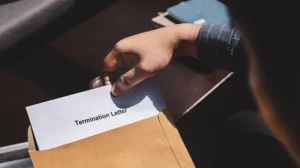Co-authored by Chloe Ferreira
Have a neighbour whose dog won’t stop barking? Or perhaps one who frequently has loud late-night parties?
Whether it’s parties or pets, or trees or fences, disputes with neighbours arise in a variety of different ways.
The distinction between something being a “nuisance” or merely an “inconvenience” is often unclear and can depend on various factors.
Where nuisances go beyond simply inconvenient there are steps – legal and non-legal – that can be taken to resolve them.
Can you make a claim?
Firstly, you need to determine whether you have a claim that can be actioned.
Generally, nuisances aren’t allowed under tort law, although specific provisions do apply to schemes.
For a claim to meet this standard you need to show that:
- You have a proprietary right to the property (owner or occupier such as a tenant);
- The interference, in some way, takes away from your enjoyment or use of the property; and,
- The interference is substantially unreasonable by the standards of a reasonable person.
So, what nuisances are ‘substantially unreasonable’?
What is a substantially unreasonable nuisance to the standard of a reasonable person can be somewhat vague. Ultimately it comes down to balancing:
“[T]he right of the occupier to do what he likes with his own, and the right of [their] neighbour not to be interfered with …”
Elston v Dore (1982) 149 CLR 480 and Chehelnabi v Gourmet and Leisure Holdings Pty Ltd [2020] NSWCATAP 102 at [55]
The courts will consider factors including the time, frequency, duration and distance from the supposed nuisance, in particular highlighting the following factors:
- Extraordinariness
- Long duration
- Impact on health
- Preventative steps
- Nature of the property
- Public interest
- Intent
What are some common nuisances?
- Smoke penetration from cigarettes, e-cigarettes, vapes etc. that is more than merely the smell;
- Continued light intrusion and disruption which can lead to sleep deprivation; and,
- Consistent noise related interference can constitute a nuisance, particularly if it causes sleep deprivation, etc.
Tree trouble with neighbours
Tree disputes are another common source of tension between neighbours. This is particularly the case when overhanging branches or intrusive roots cause property damage or safety concerns.
The Dividing Fences Act 1991 (NSW) provides a framework for fencing disputes. However, issues involving trees often fall under both local council regulations and the common law tort of nuisance.
In NSW, the tort of nuisance can be used when a tree on one property causes a substantial and unreasonable interference with a neighbour’s use or enjoyment of their land – such as when branches block sunlight, drop debris onto a driveway, or roots invade plumbing systems.
The Trees (Disputes Between Neighbours) Act 2006 (NSW) provides more specific guidelines around what to do about the removal or trimming of problematic trees.
This piece of legislation arose in an endeavour to address ‘revenge hedges’ which were strategically planted to block a neighbour’s view or sunlight, often used as a form of spite against the neighbour.
In NSW, if a neighbour wishes to remove or trim a tree on your property, your consent is required. If they enter your property to do so without permission and refuse to leave, they may also be trespassing. For many trees related concerns, where the Trees Disputes Act applies, it is not possible to also make a nuisance claim.
If a tree is causing or likely to cause damage to your property or any person you are required in the first instance to try and resolve the matter with the owner of the property. If that fails, mediation or an application to the Land and Environment Court as a last resort may be possible, depending on the circumstances.
Where a tree is obstructing views and blocking sunlight – the main solution is to get the owner to agree to remove it with council approval. If trees form part of a high hedge blocking sunlight it is still necessary to try and resolve the issue with your neighbour in the first instance. In either circumstance if it cannot be resolved mediation may also be a good option. The final recourse is through proceedings in the Land and Environment Court.
What should you do?
Where safe and possible, asking or writing a letter to the neighbour to stop their behaviour/s is a good first step. If that’s unsuccessful seeking legal advice might be both necessary and helpful. Keeping records of the nuisance and any associated behaviours or communications is strongly encouraged!
If you’re experiencing issues with your neighbours, please contact a member of our Property Law or Litigation team for further advice on how best to handle and resolve the situation.














